Related Research Articles

Donkey Kong Land is a 1995 platform game developed by Rare and published by Nintendo for the Game Boy. It condenses the side-scrolling gameplay of the Super Nintendo Entertainment System (SNES) game Donkey Kong Country (1994) for the handheld Game Boy with different level design and boss fights. The player controls the gorilla Donkey Kong and his nephew Diddy Kong as they defeat enemies and collect items across 30 levels to recover their stolen banana hoard from the crocodile King K. Rool.
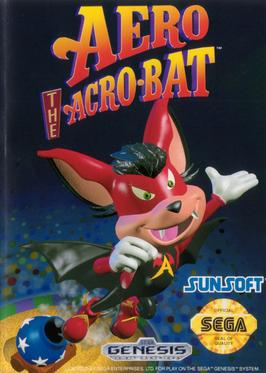
Aero the Acro-Bat is a 1993 video game developed by Iguana Entertainment and published by Sunsoft. It was released for both the Super Nintendo Entertainment System and Sega Genesis. Aero the Acro-Bat, a red anthropomorphic bat, was created by David Siller. In 2002, Metro 3D released a version of the game for the Game Boy Advance, with a battery back-up. The GBA version was titled Aero The Acro-Bat - Rascal Rival Revenge in Europe and Acrobat Kid in Japan. The Super NES version of the game was released on the Wii's Virtual Console in the PAL region on July 23 and in North America on July 26, 2010. The Super NES version was announced to be re-released on August 2, 2024 for Nintendo Switch, PlayStation 4, PlayStation 5, Xbox One and Xbox Series X/S, alongside a new localization in Japanese made by Shinyuden as Aero: Acrobat Kid for the Nintendo Switch users in Japan.

Sonic Drift is a 1994 racing game based on Sonic the Hedgehog developed and published by Sega for the Game Gear. Players control one of four characters as they race to the finish line, with 18 tracks themed after levels in 1991's Sonic the Hedgehog.
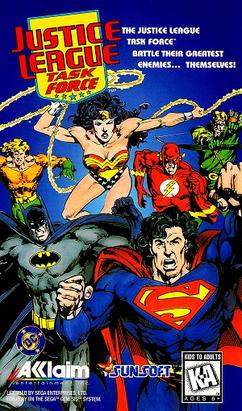
Justice League Task Force is a competitive fighting game produced by Sunsoft and distributed by Acclaim for the Super Nintendo Entertainment System and Genesis in 1995. The Super NES version was co-developed by Blizzard Entertainment and the Genesis version by Condor, Inc..
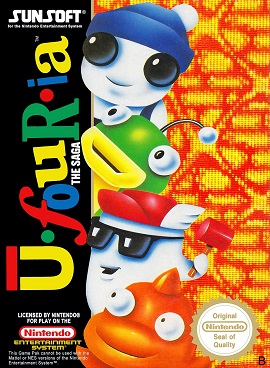
Ufouria: The Saga is a 1991 action-adventure video game developed and published in Japan and Europe by Sunsoft for the Nintendo Entertainment System. It is the first entry in the Hebereke franchise, where almost every installment in the series features a completely different playstyle. Controlling a humanoid-looking character called Bop-Louie through an interconnected world, the game focuses on exploration and searching for items and power-ups in vein of Metroid and Blaster Master, fighting bosses and minibosses. During gameplay, the player locates the main character's three friends, each of which becomes a playable character and have unique skills that allow the player to reach previously inaccessible areas.

Clock Tower is a survival horror point-and-click adventure video game series created by Hifumi Kono. The series includes four games in total. The first entry, Clock Tower (1995), was developed by Human Entertainment and released on the Super Famicom in Japan. Human Entertainment developed two more entries, Clock Tower (1996) and Clock Tower II: The Struggle Within (1998), which were released on the PlayStation and localized outside Japan. The fourth and final title, Clock Tower 3 (2002), was co-produced by Capcom and Sunsoft for the PlayStation 2. Gameplay in the series generally involves the player hiding and escaping from enemy pursuers without any weapons to defeat them. Scissorman is a reoccurring antagonist and sometimes the sole enemy in the game.
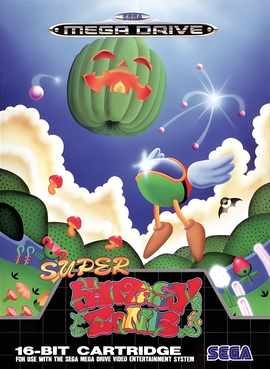
Super Fantasy Zone is a scrolling shooter video game developed and published by Sunsoft for the Mega Drive. Part of Sega's Fantasy Zone series, it was released only in Japan and Europe. Players control the character Opa-Opa on his quest to defeat Dark Menon, and the game plays similarly to previous Fantasy Zone entries. The game plays similarly to Defender, where the screen scrolls in the direction that Opa-Opa is going. The player shoots at enemies to defeat them, collecting gold coins that are used to purchase temporary upgrades that improve Opa-Opa's offensive capabilities and speed, among other things.
Gimmick!, released in Scandinavia as Mr. Gimmick, is a platform video game developed and published by Sunsoft, and originally released in Japan for the Family Computer in 1992. The story follows a small green yōkai named Yumetaro who was mistakenly gifted as a toy to a young girl. After the girl's toys come to life and whisk the girl away to another dimension, Yumetaro gives chase to save her. Playing as Yumetaro, the player must maneuver through a variety of levels, using the protagonist's star-shooting power to defeat enemies and progress through the game.

Hebereke's Popoon is a 1993 two-player puzzle video game developed and published by Sunsoft. The game was first released for the Super Famicom in 1993 in Japan, and the SNES in Europe one year later, and was also ported to the arcades in 1994 in Japan only. It is the second game in the Hebereke series. Hebereke means drunk or untrustworthy, while Popoon is an onomatopoeia for the sound made by the game pieces when they explode.

Batman: The Video Game is a platform game developed by Sunsoft for the Nintendo Entertainment System, loosely based on the 1989 film Batman. The game contains five levels culminating in a showdown with the Joker in the bell tower of Gotham Cathedral. It was received well.

Bubsy 2 is a platform video game, the sequel to Bubsy in Claws Encounters of the Furred Kind, and the second game in the Bubsy series. It was originally released by Accolade in 1994 for the Sega Genesis, Super NES, and Game Boy, and re-released for Windows through Steam on December 17, 2015.
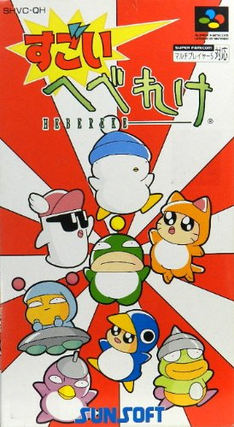
Sugoi Hebereke is a 1994 fighting game developed and published by Sunsoft in Japan for the Super Famicom on March 11, 1994. It is a spin-off of the Hebereke series, as well as Sunsoft's first attempt in the genre before they became better known for the 1995 Galaxy Fight: Universal Warriors, the 1996 Waku Waku 7, and the 1998 Astra Superstars.
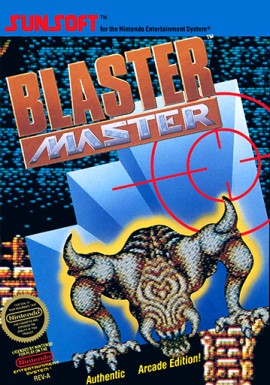
Blaster Master is a platform and run and gun video game released by Sunsoft for the Nintendo Entertainment System. It is a localized version of a Japanese Famicom game titled Chō Wakusei Senki Metafight, which was released on June 17, 1988. The game was released in North America in November 1988 and in Europe on April 25, 1991. The game is the first in the Blaster Master series, and it spawned two spin-off games as well as two sequels.
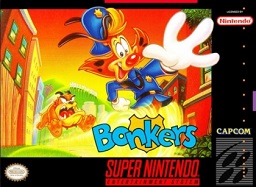
Bonkers is a 1994 platform video game developed by Sun L and published by Capcom. It was released in October 1994, for the Super Nintendo Entertainment System (SNES). It is based on the animated television series Bonkers.

Batman: The Video Game is a 1990 action video game developed and published by Sunsoft for the Game Boy. Based on the DC Comics superhero Batman, it is inspired by the Warner Bros.'s 1989 film of the same name. In the main storyline, Batman must face the Joker. The Game Boy version was developed by most of the same staff at Sunsoft which had previously worked on the Nintendo Entertainment System adaptation based on the 1989 film. It was produced by Cho Musou, while soundtrack was composed by Naoki Kodaka, Nobuyuki Hara, and Shinichi Seya. The game garnered generally favorable reception from critics and retrospective commentarists.
References
- ↑ "Deae Tonosama Appare Ichiban (SNES) Super Nintendo Game by Sunsoft (Sun Electronics) | superfamicom.org". web.archive.org. 9 December 2023. Retrieved 27 July 2024.
- ↑ "Go For It Tonosama". Electronic Gaming Monthly. No. 66. January 1995. p. 100. Retrieved 27 July 2024– via Archive.org.
- ↑ "Esos Locos Bajitos ... Nipones". Marca Player (in Spanish). No. 7. April 2009. p. 46. Retrieved 27 July 2024– via Archive.org.
- ↑ "Deae Tonosama Appare Ichiban". Hardcore Gaming 101. 1 December 2015. Retrieved 27 July 2024.